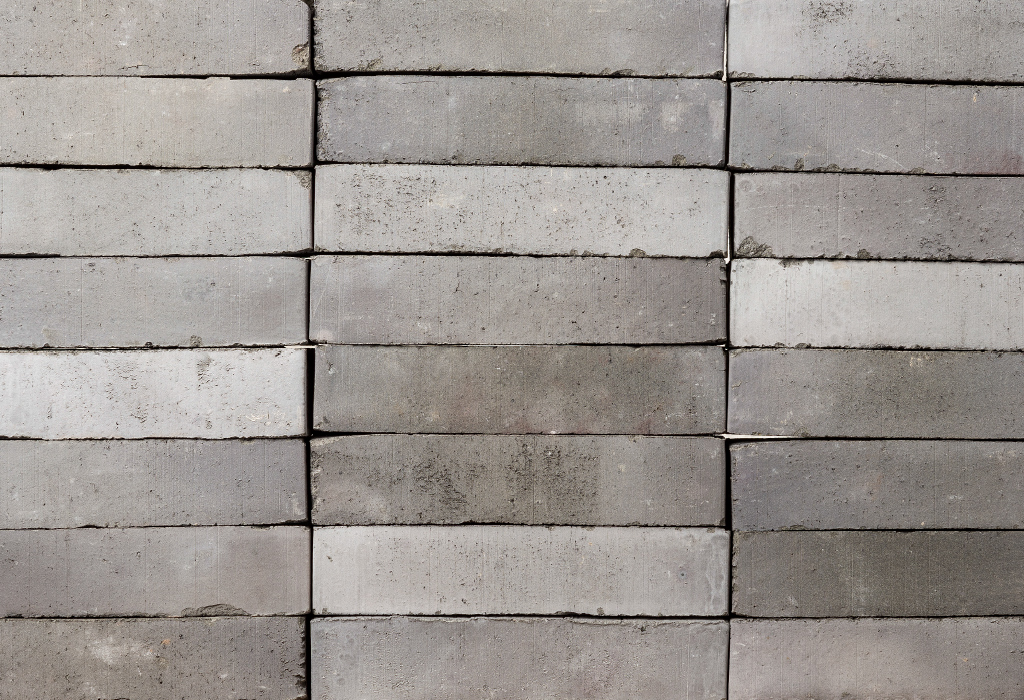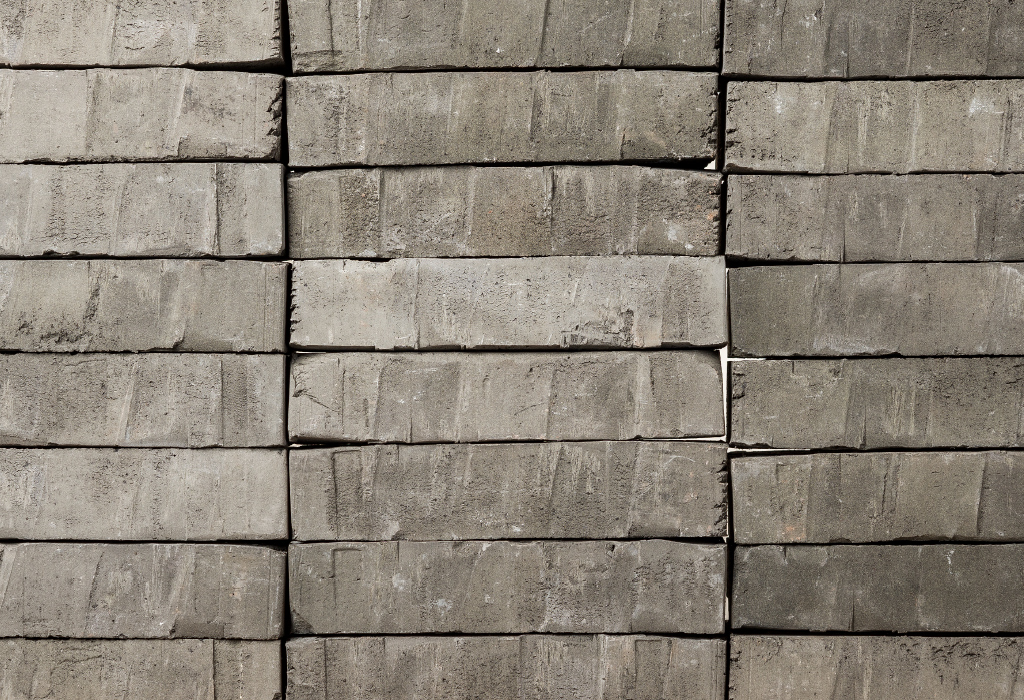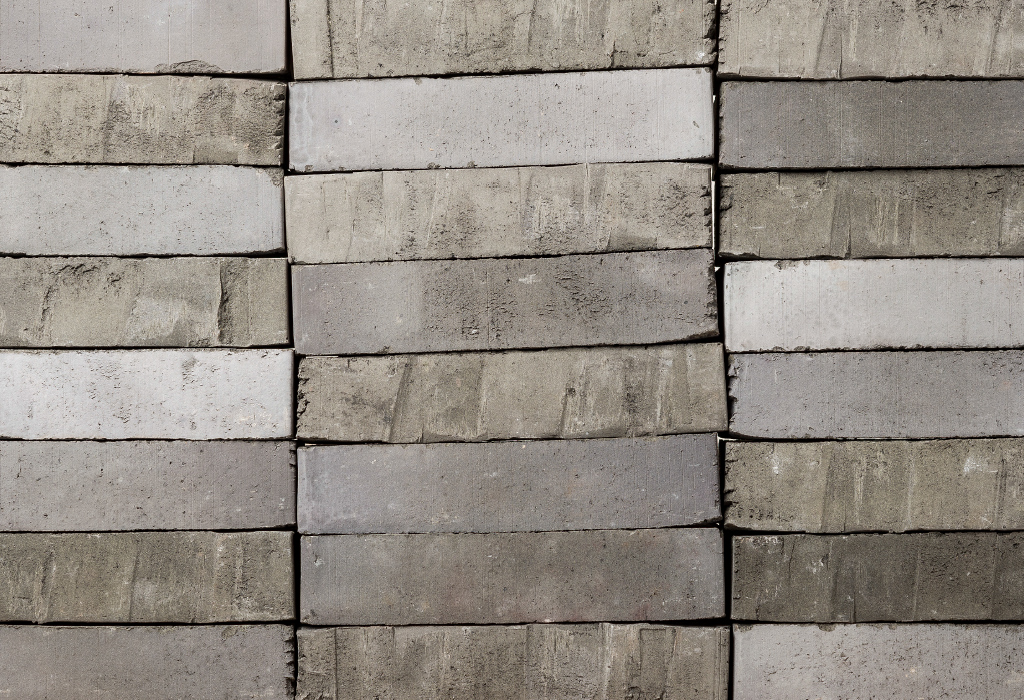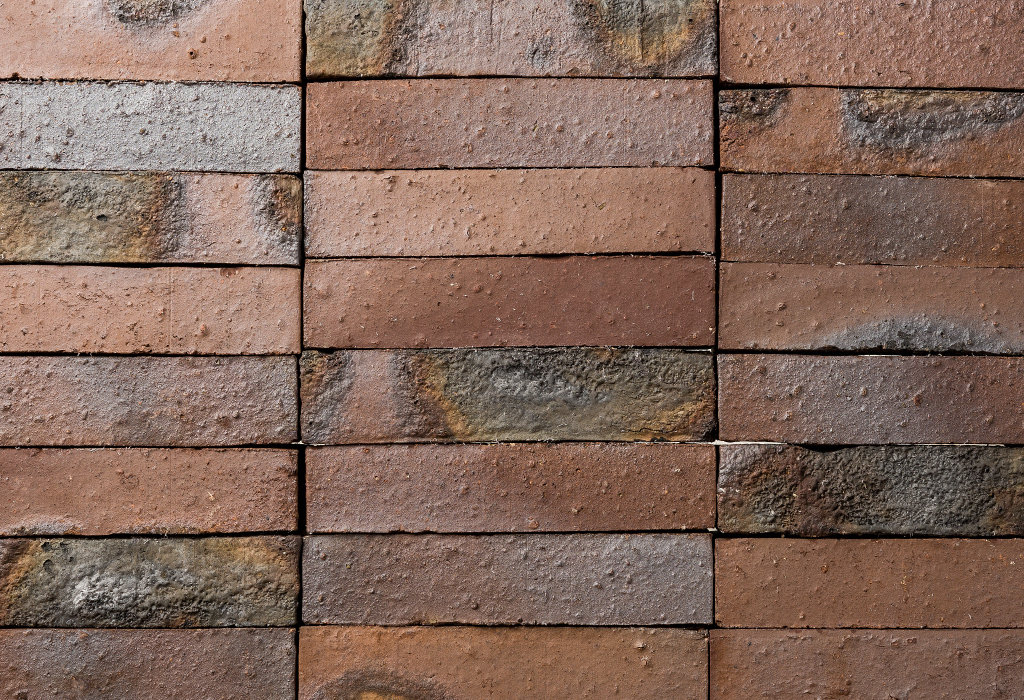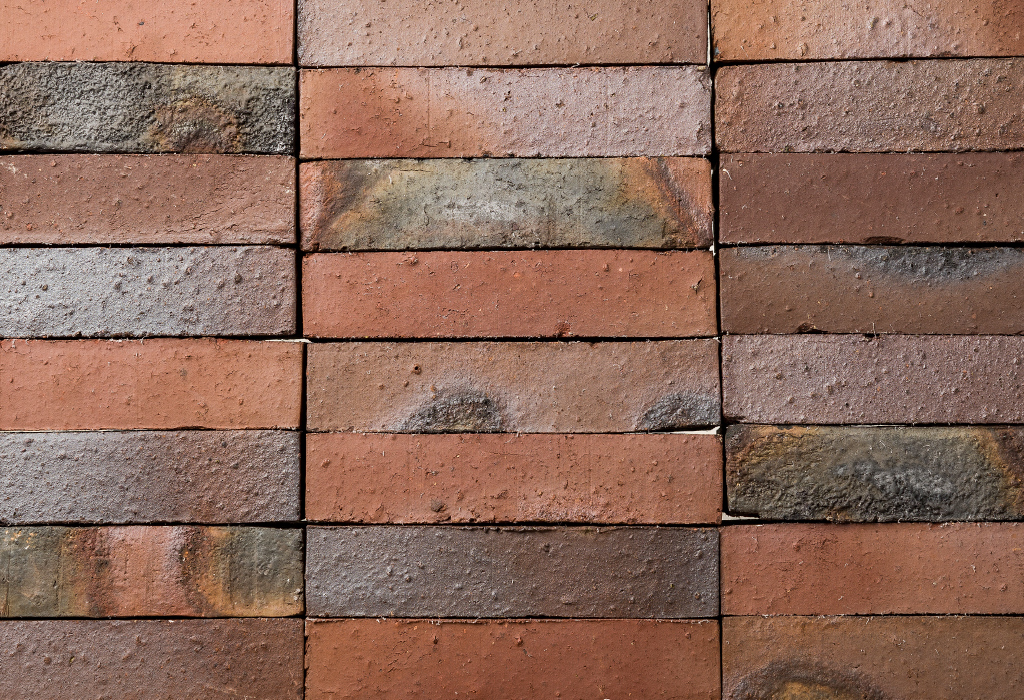Configurations and formats
Front face configuration
The front face of the brick faces outwards.
Reverse face configuration
This involves laying all of the bricks with the reverse face facing outwards. The reverse face has a characteristic appearance as a result of marks from the belts used to transpoprt the bricks after extrusion and the slats on which they are left to dry. The belts and slats leave impressions in the still soft clay of the unfired bricks. This gives rise to indentations which give the reverse face of the bricks a unique profile.
Mixed face configuration
In a mixed face configuration, the facing is made up of bricks showing the front and reverse face in varying quantities.
Allmost all Deppe bricks can also be supplied and laid in reverse or mixed face configurations. We will be happy to advise.
1693wged: one brick - three impressions
On the left: Waterstruck brick 1693wged - front face of the brick faces outwards / Centre: reverse face configuration, the distinctive reverse faces are turned to the front / Right: The mixed face configuration offers a harmonious mixture of front and reverse sides.
Blends
Blends consist of different brick types, which usually differ in the composition of the raw material and are combined in different percentages in the brickwork. Interesting colour effects can be produced using blends - an artistic rather than a natural colour mix.
Top selling blends: 1635ek and a blend of 1622/1635ek. Most of our bricks can be ordered in different blends - we will be happy to advise you!
